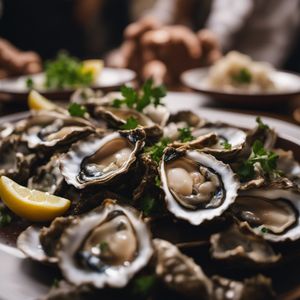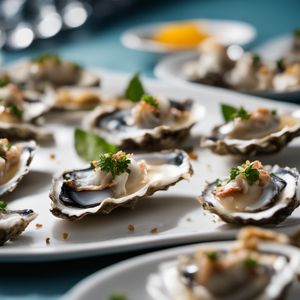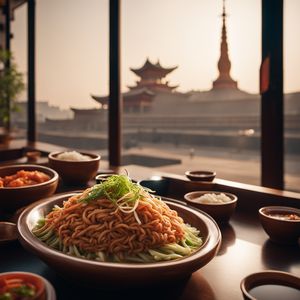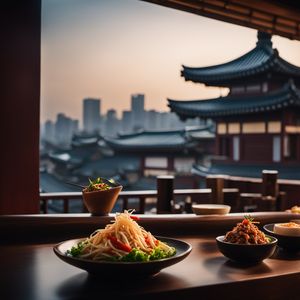
Dish
Guljeon
Korean-style Oysters
Guljeon is typically made with fresh oysters that have been shucked and cleaned. The oysters are then mixed with a batter made from flour, eggs, and water, along with scallions and other seasonings. The mixture is then fried in hot oil until it is crispy and golden brown. Guljeon is typically served with a variety of dipping sauces, including soy sauce, vinegar, and chili paste. This dish is a great appetizer or side dish and can be served with a variety of other Korean dishes.
Origins and history
Guljeon is a traditional Korean seafood dish that has been enjoyed for centuries. The dish is often served at Korean restaurants and festivals throughout Korea and the United States. The dish is believed to have originated in the coastal regions of Korea, where seafood is abundant.
Dietary considerations
Suitable diet types: Healthy seafood dish that is high in protein and low in fat. Unsuitable diet types: High in sodium and should be consumed in moderation by those with high blood pressure. Allergens: Those with shellfish allergies should avoid this dish. Suggestions: Consume in moderation and pair with low-sodium side dishes.
Variations
There are many variations of guljeon, including those that are made with different types of seafood, such as shrimp or squid. Some recipes also call for the addition of vegetables, such as carrots or zucchini, to the batter for added flavor and texture.
Presentation and garnishing
To ensure that the oysters are fresh, it is important to purchase them from a reputable seafood market or supplier. When shucking the oysters, be sure to remove any bits of shell or debris to prevent injury or illness. Guljeon can be presented on a plate with the dipping sauces on the side. The dish can be garnished with fresh herbs, such as cilantro or parsley, for added flavor and visual appeal. When frying the guljeon, it is important to make sure the oil is hot enough to ensure that it cooks evenly and becomes crispy on the outside. It is also important to drain the guljeon on paper towels after frying to remove any excess oil.
Side-dishes
Guljeon is typically served with a variety of low-sodium dipping sauces, including soy sauce, vinegar, and chili paste. It can also be served with a variety of other Korean dishes, such as kimchi and bulgogi.
Drink pairings
Beer and soju are popular choices to pair with this dish.
Delicious Guljeon recipes
More dishes from this category... Browse all »

Angels on Horseback
English cuisine

Charbroiled Oysters
American cuisine

Fried Oysters
Various cuisine

Kaki Fry
Japanese cuisine

Ostiones a la veracruzana
Mexican cuisine

Ostra ao bafo
Portuguese cuisine

Oyster canapés
Various cuisine

Oysters Bienville
American cuisine



